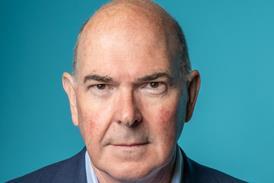Now, more than ever, we need a new, comprehensive approach to supporting and implementing change. That is why two leading think tanks are calling for a £1.5bn transformation fund

Community nursing staff monitor housebound patients
This summer marks the halfway point in the NHS’s decade of austerity. Changing population needs and a prolonged funding squeeze have placed it under intense pressure. To borrow from the nation’s favourite slogan, the NHS needs to keep calm - but “just carrying on” is not a sustainable strategy.
It is widely recognised that fundamental change is needed. The conundrum is why, given the consensus about this, has progress been so limited?
- NHS ‘needs at least £1.5bn a year’ for transformation
- Download Making Change Possible: a Transformation Fund for the NHS
One of the reasons is that NHS policymakers have placed too much focus on the imperative to change as a driving force for transforming services, and too little on enablers of change. Now, more than ever, we need a new, systematic and comprehensive approach to supporting and implementing change in the NHS, accompanied by dedicated investment.
Fundamental change
To understand how such an approach could work, the King’s Fund and the Health Foundation have spent the last nine months examining case studies of transformational change, from within the health sector and beyond, and capturing the experience of NHS organisations seeking to deliver the vision set out in the NHS five year forward view.
‘A sustainable NHS is not about more organisational change but reforming the way care is provided to patients’
The change the NHS needs to embark on is more fundamental than the structural reorganisations which have preoccupied system leaders over the last few decades.
Delivering a sustainable NHS is not about more organisational change but reforming the way care is provided to patients, day in, day out across every part of the health and care system. Developing, testing and implementing these changes will require expertise and capacity, programme managers, more primary and community health service capacity and some new infrastructure, especially IT, for example.
But our analysis suggests that the key to successful change is engagement with and investment in staff. The essence of the task is to get more than one million people to work differently.
This is a huge challenge at any time but an even bigger task when services are under such intense pressure. This is only possible if staff are given time away from the day job to develop new ways of working, and that won’t happen unless this is properly resourced.
Support investment and expansion
We argue that the NHS needs a dedicated transformation fund. This should be independent of the current regulatory and performance management system, transparent and publicly accountable, with clear measureable objectives.
Its role should be to support investment in innovative new models of care and, when they have demonstrated their value, support the wide-scale spread of these models. This would include supporting investments beyond traditional NHS organisations - in social care, public health, charities and the private sector.
Funding innovation involves risk. Some investments will fail and this should be recognised upfront and not seen as a sign of poor performance. Funding innovation and spread also needs a very different investment approach - traditional business case-based passive grant-making is unlikely to work. The fund should utilise the sort of approaches typically used by social finance and venture capital which we describe as ‘active investment’. It should also focus on evaluation, which must be in ‘real-time’ to provide feedback to local programmes to shape the evolution of new models of care.
We have estimated the amount of funding required to support transformation up to 2020. This is based on the fund having two strategic objectives:
- supporting NHS organisations to deliver the higher rate of efficiency growth required to find the £22bn of savings identified in the Five year forward view;
- investing in programmes to design, implement and evaluate new models of care in around 20 per cent of the country (the vanguards and beyond).
Radical approaches
Our analysis suggests this would £1.5bn-£2.1bn a year in dedicated funding. Some of this can be found by bringing together existing funding streams. There is also scope to raise resources by making better use of the NHS estate. While our analysis indicates that selling surplus assets could yield approximately £700m in one-off funding, we suggest that more radical approaches to developing the estate could generate more value in a sustainable way and provide a regular income stream to support change.
‘Much of the money required would be in addition to the £8bn a year funding increase’
However, much of the money required would be in addition to the £8bn a year funding increase pledged by the government by 2020. This is a big ask when other public services are being cut, but without dedicated funding, the risk is that fundamental change will continue to be limited, leading to higher costs in the long run.
Delivering the change required in the timescale we have outlined would be a huge task. Beyond 2020, the challenge is to share the lessons learned and put them into practice across the whole of the service. A successful and sustainable health and care system continually adapts and responds to the needs of the population it serves and the environment in which it delivers care. Transformation must not be seen as a one-off project but should become part of the DNA of the NHS and the way it is funded.
Anita Charlesworth chief economist at the Health Foundation. Richard Murray is director of policy at the King’s Fund
More information
- Read the report - Making Change Possible: a Transformation Fund for the NHS


























2 Readers' comments